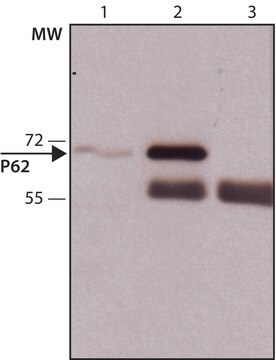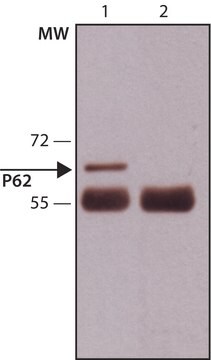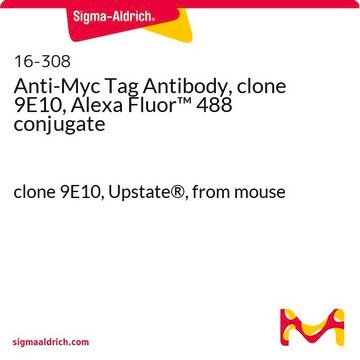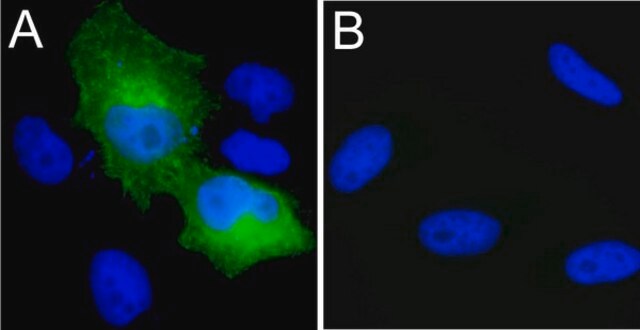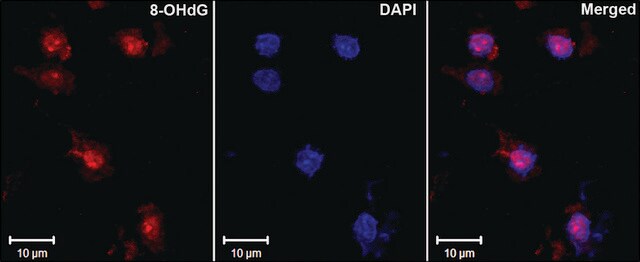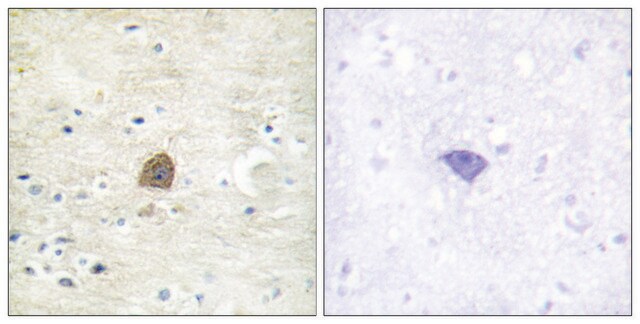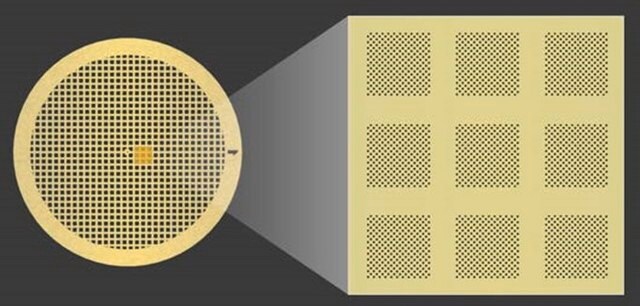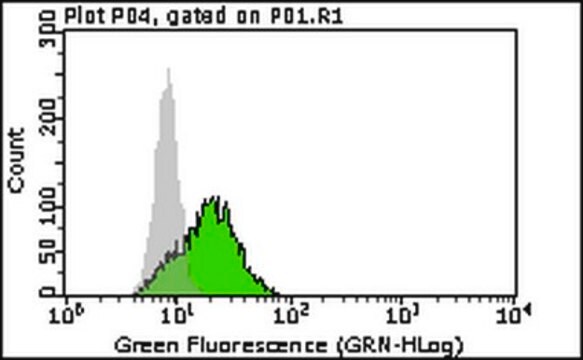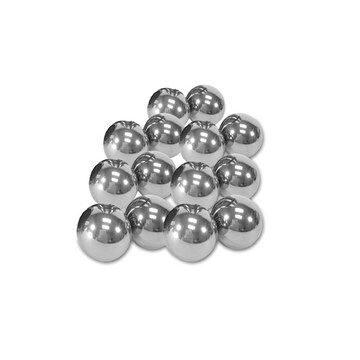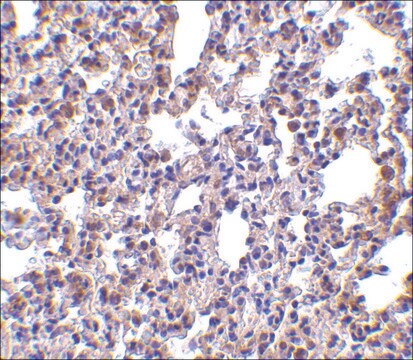一般說明
We are committed to bringing you greener alternative products, which adhere to one or more of The 12 Principles of Green Chemistry.This antibody is Preservative-free, produced without the harm or sacrifice of animals and exceptionally stable to allow for ambient shipping and storage if needed and thus aligns with "Waste Prevention", "Designing Safer Chemicals" and "Design for Energy Efficiency".
Click here for more information.
ZooMAb® antibodies represent an entirely new generation of recombinant monoclonal antibodies.Each ZooMAb® antibody is manufactured using our proprietary recombinant expression system, purified to homogeneity, and precisely dispensed to produce robust and highly reproducible lot-to-lot consistency. Only top-performing clones are released for use by researchers. Each antibody is validated for high specificity and affinity across multiple applications, including its most commonly used application. ZooMAb® antibodies are reliably available and ready to ship when you need them.
特異性
Clone 2H14 is a ZooMAb® Rabbit recombinant monoclonal antibody that specifically detects Interferon-induced, double-stranded RNA-activated protein kinase (PKR). It targets an epitope within the N-terminal half.
免疫原
His-tagged recombinant fragment corresponding to 264 amino acids from the N-terminal half of human Interferon-induced, double-stranded RNA-activated protein kinase (PKR).
應用
Quality Control Testing
Evaluated by Western Blotting in SH-SY5Y cell lysate.
Western Blotting Analysis: A 1:1,000 dilution of this antibody detected PKR in SH-SY5Y cell lysate.
Tested applications
Western Blotting Analysis: A 1:1,000 dilution from a representative lot detected PKR in HeLa and C6 cell lysates.
Immunocytochemistry Analysis: A 1:100 dilution from a representative lot detected PKR in HeLa cells.
Immunohistochemistry (Paraffin) Analysis: A 1:100 dilution from a representative lot detected PKR in human kidney tissue sections.
Affinity Binding Assay: A representative lot of this antibody bound recombinant Human PKR protein fragment with a KD of 2.5 x 10-7 in an affinity binding assay.
Flow Cytometry Analysis: 0.1 μg from a representative lot detected PKR in one million HeLa and MCF-7 cells.
Note: Actual optimal working dilutions must be determined by end user as specimens, and experimental conditions may vary with the end user
Evaluated by Western Blotting in SH-SY5Y cell lysate.
Western Blotting Analysis: A 1:1,000 dilution of this antibody detected PKR in SH-SY5Y cell lysate.
標靶描述
Interferon-induced, double-stranded RNA-activated protein kinase (UniProt: P19525; also known as EC:2.7.11.1, Eukaryotic translation initiation factor 2-alpha kinase 2, eIF-2A protein kinase 2, Interferon-inducible RNA-dependent protein kinase, P1/eIF-2A protein kinase, Protein kinase RNA-activated, PKR, Protein kinase R, Tyrosine-protein kinase EIF2AK2, p68 kinase) is encoded by the EIF2AK2 (also known as PKR, PRKR) gene (Gene ID: 5610) in human. PKR is a homodimeric protein that is highly expressed in thymus, spleen, and bone marrow. Elevated levels of PKR are also detected in breast and colon carcinomas that correlates with tumor progression and invasiveness. PKR is initially produced in an inactive form and is activated by binding to viral dsRNA, which causes dimerization and autophosphorylation in the activation loop and stimulation of function. It serves as an interferon-induced dsRNA-dependent serine/threonine kinase that phosphorylates the -subunit of eukaryotic translation initiation factor 2 (eIF-2 ) and plays a key role in the innate immune response to viral infections. It inhibits viral replication via the integrated stress response and displays antiviral activity against a wide range of DNA and RNA viruses, including HCV, HBV, and HHV-1. In addition to serine/threonine-protein kinase activity, it also has tyrosine-protein kinase activity and is reported to phosphorylate Cdk1 at tyrosine 4 upon DNA damage, facilitating its ubiquitination and proteasomal degradation. Either as an adapter protein and/or via its kinase activity, it can regulate various signaling pathways, including p38 MAP kinase, NF-kB, insulin signaling, and activity of various transcription factors involved in the expression of genes encoding pro-inflammatory cytokines and interferons. This ZooMAbZooMAb® recombinant monoclonal antibody, generated by our propriety technology, offers significantly enhanced specificity, affinity, reproducibility, and stability over conventional monoclonals. (Ref.: MacAllister, CS., et al. (2012). J. Biol. Chem. 287(43); 36384-36392; Park, IH., et al. (2011). Mol. Cell. 32(2); 167-172; Su, Q., et al. (2006). Proc. Natl. Acad. Sci. USA. 103(1); 63-68).
外觀
Purified recombinant rabbit monoclonal antibody IgG, lyophilized in PBS, 5% Trehalose, normal appearance a coarse or translucent resin. The PBS/trehalose components in the ZooMAb formulation can have the appearance of a semi-solid (bead like gel) after lyophilization. This is a normal phenomenon. Please follow the recommended reconstitution procedure in the data sheet to dissolve the semi-solid, bead-like, gel-appearing material. The resulting antibody solution is completely stable and functional as proven by full functional testing. Contains no biocide or preservatives, such as azide, or any animal by-products. Larger pack sizes provided as multiples of 25 μL.
重構
300 μg/mL after reconstitution at 25 μL per vial. Please refer to guidance on suggested starting dilutions and/or titers per application and sample type.
儲存和穩定性
Recommend storage of lyophilized product at 2-8°C; Before reconstitution, micro-centrifuge vials briefly to spin down material to bottom of the vial; Reconstitute each vial by adding 25 μL of filtered lab grade water or PBS; Reconstituted antibodies can be stored at 2-8°C, or -20°C for long term storage. Avoid repeated freeze-thaws.
法律資訊
ZooMAb is a registered trademark of Merck KGaA, Darmstadt, Germany
免責聲明
Unless otherwise stated in our catalog or other company documentation accompanying the product(s), our products are intended for research use only and are not to be used for any other purpose, which includes but is not limited to, unauthorized commercial uses, in vitro diagnostic uses, ex vivo or in vivo therapeutic uses or any type of consumption or application to humans or animals.

